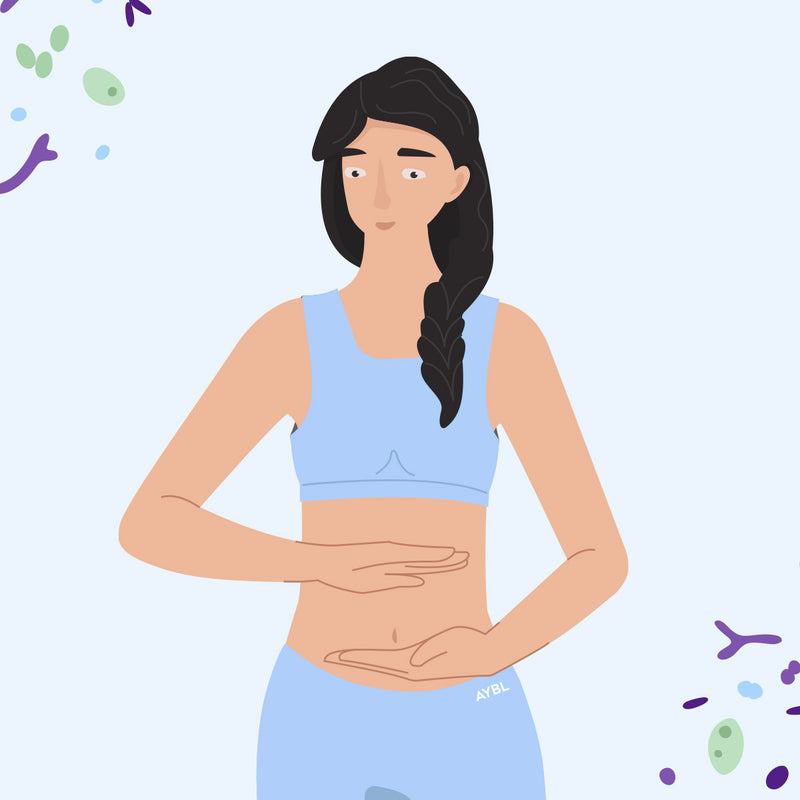
Everything You Need To Know About Gut Health
Caring for our bodies goes far beyond the gym, which is why we’re shining a spotlight on an issue that has raised a number of concerns across the female fitness community. Gut health.
What was once a topic that we purposefully avoided, is now fast becoming one of the most widely talked about subjects in the wellness space. Just googling the term ‘gut health’ throws up 955,000,000 results!
And while most of us know that ‘good’ gut health is desirable, understanding what it really means to have a healthy gut is proving more of a challenge.
That’s why we’re here to discuss gut health and what you can do to improve it, not only to enhance your overall health, but to improve your performance in other aspects of your life - such as killing it at the gym!
Stick around to find out more.

WHAT IS GUT HEALTH AND WHY DOES IT MATTER?
Our digestive system, more specifically your gut microbiome (microorganisms living in your intestines), plays an important role in our overall health and wellbeing. Each person has about 200 different species of bacteria, viruses and fungi in their digestive tract.
Good gut health occurs when you have the right balance of good (helpful) and bad (potentially harmful) bacteria and yeast in your digestive system.
Research shows that about 80% of your immune system is in the gut, which means an unhealthy gut can negatively impact your immune system and potentially result in illness. Not to mention, studies have also highlighted that a large variety of bacteria in the gut could help reduce the risk of conditions like diabetes, inflammatory bowel disease and psoriatic arthritis.
HOW DOES YOUR GUT AFFECT YOUR OVERALL HEALTH?
Your gut is the foundation of your health.
Primarily, it aids the digestion of food, absorbing nutrients and using it to fuel and maintain your body. If your gut doesn’t have the right balance of tiny microbes and bacteria, your immune system is unable to work as effectively, increasing the likelihood of sickness.
Your gut is also where your body gets rid of metabolic waste and toxins, but if you have an unhealthy gut, your body will struggle to rid itself of those toxins. In this case, it can cause a number of health issues, such as chronic fatigue and chronic pain.
Studies have also found links between gut health and:
- Mental health;
- Autoimmune diseases;
- Gastrointestinal diseases;
- Cardiovascular diseases.

WHAT ARE THE SIGNS OF AN UNHEALTHY GUT?
There are many aspects of modern life that affect your gut microbiome, including a lack of sleep, high stress levels and a diet high in processed and high sugar foods.
The most common sign of poor gut health is an upset stomach (bloating, constipation, diarrhoea). However, beyond the status of your bowel movements, there are other signs your gut could use some attention. These include:
- Abnormal weight loss;
- Sleep disturbances or constant fatigue;
- Skin irritation;
- Food intolerances;
- Brain fog or mood swings.
WHY DO WE BLOAT?
Bloating is one of the most common symptoms of an unhealthy gut. This causes the belly to feel full, tight and uncomfortable, usually due to gas.
The truth is, bloating is totally normal and if you’re experiencing it, you’re definitely not alone. If you get a bloated stomach after eating, it might be something as simple as eating too much too fast. Alternatively, you could have a food intolerance or other condition that causes gas and digestive contents to build up. Your menstrual cycle is also another common cause of temporary bloating.

HOW TO IMPROVE YOUR GUT HEALTH
There are a number of things you can do to improve your gut health. These include:
- Reducing your stress levels. You can do this by trying some gentle exercise, such as yoga or walking - exercise in general is great for gut health too!
- Getting plenty of sleep. Check out our sleep tips here.
- Staying hydrated.
- Limiting your alcohol intake.
- Changing your diet.
Adapting your diet is arguably the most effective way to achieve ‘good’ gut health, although it's important to bear in mind this will differ for everyone. The key is to eat more foods that are high in fibre. Fibre is a plant-based nutrient that reduces the risk of metabolic diseases by stimulating the growth and diversity of good bacteria in the gut. Fibre is found in:
Aim for approximately 30g of fibre per day.

Remember, gut health is extremely important for your overall health and wellbeing and healing your gut takes time, dedication and consistency.
The key is to make long-term changes that will benefit you for years to come.